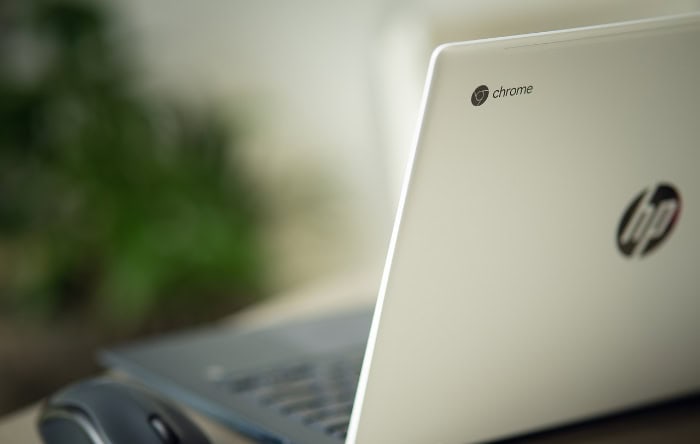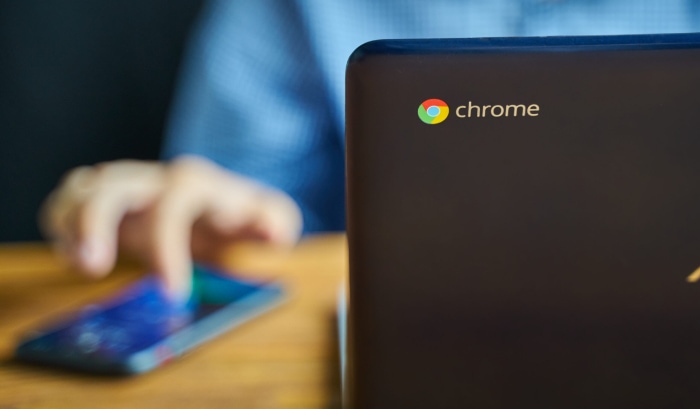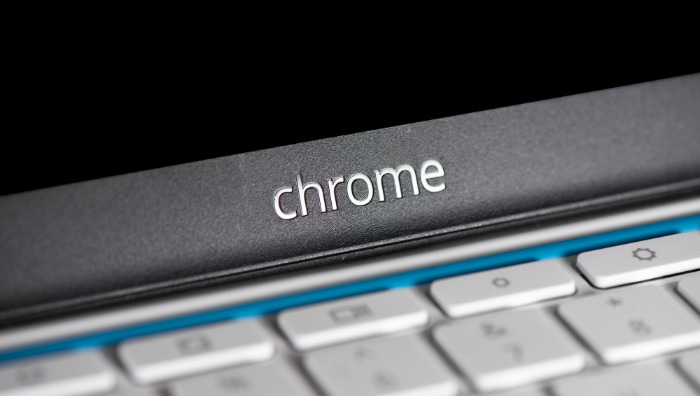Why Are Chromebooks So Cheap? Behind the Low Price

For anyone browsing for a new laptop, the eye-catching prices of Chromebooks practically leap off the shelf. Sleek designs paired with price tags far lower than those of traditional Windows or Mac laptops make them almost irresistible for students, families, and budget-conscious shoppers.
What exactly makes these machines so affordable without sacrificing everyday functionality? From stripped-back hardware to clever use of free cloud software, several behind-the-scenes decisions have allowed Chromebooks to carve out their reputation as champions of value. Before jumping in, let’s unpack the strategies, trade-offs, and ideal scenarios that make Chromebooks a popular choice for accessible, hassle-free computing.
Hardware Cost Reduction Strategies
Price accessibility remains a defining trait for Chromebooks, and much of that affordability starts with intentional choices in hardware design. Manufacturers have strategically selected components that strike a balance between functionality and cost-effectiveness.
The result is a device focused on handling everyday tasks such as web browsing, streaming, and simple productivity, while forgoing higher-end specifications typically found in more expensive laptops.
Entry-Level Components
One of the most significant cost-saving measures involves the use of entry-level and energy-efficient processors, such as Intel Celeron or MediaTek chips. These processors may not win any speed contests, but they are more than capable of supporting the lightweight Chrome OS and basic online activities.
Pairing these CPUs with minimal amounts of RAM, often just 4GB, helps keep costs in check. For users who primarily operate within a browser and rely on cloud-based applications, this amount of memory suffices.
Demanding workloads or resource-hungry applications are not the target here. Instead, the hardware focuses on delivering reliable performance for essential tasks while consuming less power and generating less heat.
Storage Limitations
Storage is another area where savings are achieved by making practical compromises. Chromebooks frequently utilize 32GB to 64GB of eMMC storage, which is both more affordable and slower than the solid-state drives (SSDs) commonly found in higher-end laptops.
Since Chrome OS is designed to operate efficiently in tandem with cloud storage solutions like Google Drive, less onboard storage is a reasonable trade-off for many users. Files, photos, and documents can be easily accessed and managed online, further reducing the need for expansive and expensive local storage.
This approach not only cuts costs but also allows Chromebooks to retain their slim profiles and light weight.
Display and Build Compromises
A Chromebook’s exterior also reflects the drive to minimize costs. Most models feature smaller screen sizes, commonly between 11 and 14 inches, making them portable and easy to carry.
However, these displays may offer lower resolutions and average color accuracy compared to those of mainstream laptops. Plastic is a frequent material for the chassis, as it is less expensive than metal and still provides adequate durability for everyday use.
The result is a machine that feels lightweight and convenient, though perhaps less premium in hand. Still, for students, families, or travelers looking for a practical and affordable option, these choices represent a successful balance between functionality and budget.
Software and Licensing Economics

Affordability in Chromebooks is not merely a product of cheaper hardware. The software side plays an equally significant role in keeping costs down for both the manufacturer and the end user.
Unlike traditional laptops that require expensive licenses for operating systems or bundled software, Chromebooks are designed around a completely different philosophy.
Free OS Licensing
Chrome OS, the operating system that powers Chromebooks, is based on open-source foundations and provided by Google at no cost. Manufacturers can install Chrome OS on their devices without having to pay licensing fees that are typically required for Microsoft Windows or Apple’s macOS.
Eliminating these fees allows companies to price Chromebooks much more competitively. Instead of allocating budget toward software costs, manufacturers can channel resources into improving the user experience, supporting innovation, or simply making devices more affordable.
Cloud-Dependent Design
A fundamental design choice behind Chromebooks is their strong emphasis on cloud computing. Most day-to-day tasks rely on web applications such as Google Docs, Sheets, and Slides, which run directly in the browser without using much local computing power.
As a result, Chromebooks do not need high-performance processors or large amounts of RAM to deliver a smooth experience for their target audience. The device serves as a gateway to the internet, where the real heavy lifting happens on remote servers maintained by Google and other software providers.
This strategy not only streamlines the hardware requirements, but it also reduces energy usage and the need for complex and expensive internal components.
Minimal Pre-installed Software
Bundled software or “bloatware” is often found on traditional laptops, sometimes inflating the cost due to licensing deals with third-party vendors. Chromebooks take a different approach by shipping with only what is necessary to get users started, such as the Chrome browser, basic system tools, and access to Google Play or the Chrome Web Store.
Paid software is kept to a minimum, and manufacturers are not faced with additional costs tied to software agreements. Users benefit from a clean system that is ready to use right out of the box, and manufacturers keep expenses, and thus prices, at a minimum.
Target Audience and Market Positioning

Manufacturers didn’t set out to make Chromebooks for everyone. Instead, they thoughtfully evaluated who would benefit most from a simple, budget-friendly device and tailored their offerings to match those needs.
Careful market positioning and a clear focus on value have enabled Chromebooks to stand out, particularly with specific groups of consumers and organizations.
Education Sector Focus
Schools have emerged as one of the largest adopters of Chromebooks, and for good reason. Bulk purchases for entire classrooms or school districts allow manufacturers to take advantage of economies of scale.
Producing and distributing thousands of nearly identical devices reduces manufacturing costs per unit, bringing the price down even further for educational institutions. Easy deployment, automatic updates, and centralized management also appeal to school IT staff.
For students, the simple interface and integration with tools like Google Classroom support effective learning without technical hurdles or distractions. The education sector’s demand for affordable, easy-to-maintain devices has played a pivotal role in shaping the Chromebook’s market identity.
Competitive Pricing Pressure
Major tech brands such as Acer and HP have played a major part in establishing Chromebooks as champions of the budget segment. With several companies aiming for the same audience, competition remains intense.
Each manufacturer looks for ways to trim prices, offer promotional deals, or bundle additional services. This rivalry benefits consumers who gain access to ever-lower price points and a variety of models to suit their needs.
The end result is a continually expanding selection of Chromebooks, each vying to offer the most value without straying from an affordable price tag.
Niche Use-Case Optimization
Chromebooks shine brightest for users whose computing demands are simple and focused. Web browsing, streaming video, checking email, and working on online documents make up the core experience.
Rather than competing directly with traditional laptops meant for gaming or intensive creative work, Chromebooks are designed for lightweight productivity and online convenience. Their intuitive interface and snappy performance for basic tasks make them an attractive choice for students, families, and anyone looking for a straightforward, no-fuss device.
Manufacturers have fine-tuned hardware and software to deliver smooth experiences for these use cases, ensuring users get the most out of every dollar spent.
Performance and Longevity Trade-Offs

Affordable Chromebooks offer plenty of value for everyday use, but that approachable price tag comes with limitations. Design choices that keep costs low can mean some sacrifices in both performance and long-term usability.
Recognizing these trade-offs helps users have reasonable expectations and choose a device that genuinely fits their needs.
Limited Multitasking Capabilities
A Chromebook’s hardware, optimized for simplicity and efficiency, is not built for heavy multitasking or demanding programs. Lightweight processors and modest amounts of RAM handle web browsing and basic office tasks with ease, but running several intensive apps at once, editing large videos, or playing graphics-heavy games quickly reveals the device’s boundaries.
Users will notice slowdowns if they open too many browser tabs or attempt to use resource-hungry software. Chromebooks shine for users with straightforward requirements, but those who need to juggle multiple processes or run specialized applications should consider machines with more robust internals.
Auto Update Expiration (AUE)
Chromebooks offer a streamlined update system, automatically receiving the latest features and security patches from Google. However, every device has what is called an Auto Update Expiration (AUE).
After a predetermined period, typically five to eight years from the date a model is first released, automatic updates cease. The Chromebook will continue functioning, but it will stop receiving security and software updates.
Users may eventually encounter compatibility issues with websites or newer applications. While this policy ensures devices remain current for many years, it also sets a clear endpoint for official support, which is an important consideration for long-term planning.
Repairability Challenges
Keeping costs low often comes at the expense of repairability. Many Chromebooks are assembled with non-standardized parts, and components such as batteries, screens, and keyboards are sometimes fused or glued in place.
Servicing these devices can prove difficult and often requires specialized tools. For lower-priced models, repair costs may rival or exceed the value of the device itself, leading many owners to replace their Chromebook instead of fixing it.
This design approach can benefit users looking for initial savings, but may discourage those who hope to extend their device’s lifespan through easy repairs or upgrades.
Ecosystem and Hidden Cost Factors

The affordability of Chromebooks is shaped not only by upfront pricing but also by the wider ecosystem they fit into and some less obvious expenses. Several behind-the-scenes factors influence total ownership experience, from how software is delivered to the long-term consequences of device replacement.
Looking beyond sticker price reveals both unique cost-saving benefits and new considerations that users and organizations should keep in mind.
Cloud Service Subsidization
Chromebooks are tightly integrated with Google’s suite of free web-based tools, such as Google Drive, Docs, Sheets, and Slides. Offering these powerful cloud services at no additional cost helps offset the device’s limited internal storage.
Users can create, edit, and store documents online without worrying about running out of local space. This approach allows manufacturers to maintain affordable hardware specs without sacrificing access to productivity features.
No extra payments for office software or storage upgrades means the true cost of ownership remains low for most Chromebook users, especially students and those with basic needs.
Deployment Efficiency
Organizations, especially schools and businesses, benefit from the rapid deployment and easy management of Chromebooks. Setup is straightforward, devices can be configured and rolled out to large groups with minimal time and technical knowledge required.
Centralized tools enable IT staff to push updates, manage user permissions, and troubleshoot remotely, reducing the costs usually associated with onboarding new devices or training users on complex systems. This efficiency appeals strongly to institutions needing to get tech in users’ hands quickly without excessive expenditure or ongoing support contracts.
Environmental Impact
While affordability is a strong selling point, frequent replacement cycles contribute to a growing environmental concern. The shorter expected lifespan of Chromebooks, often linked to their Auto Update Expiration and limited repairability, leads to more devices being discarded and replaced compared to more durable laptops.
E-waste disposal is a significant issue, and additional money may be required for recycling or responsible hardware replacement. Organizations and individuals aiming to minimize their environmental footprint should factor these realities into their overall cost assessment, balancing immediate savings with the potential for increased long-term waste and replacement spending.
Conclusion
Chromebooks have earned their reputation for affordability through a unique combination of strategies. Lightweight hardware, free Chrome OS licensing, and a strong reliance on Google’s cloud services keep both manufacturing and ownership costs down.
A focus on bulk sales to sectors like education and fierce competition among brands further drives prices lower, making Chromebooks some of the most accessible laptops on the market.
Affordable pricing comes with trade-offs. Simple processors and limited memory suit everyday web and productivity tasks but fall short for resource-intensive work or extensive multitasking.
The finite software support period and low repairability can shorten a device’s usable life, potentially leading to higher turnover and increased e-waste. While cloud-based tools and easy management make deployment attractive for organizations, buyers should be aware of hidden costs and environmental impact.
For students, families, and casual users who prioritize simplicity, reliability, and value, Chromebooks present an excellent solution. Their design perfectly matches those who spend most of their time online and require a straightforward, low-maintenance device.
For power users or those needing a laptop for specialized tasks, more traditional options may be a better fit. Ultimately, Chromebooks deliver impressive value when aligned with the right needs and expectations.


